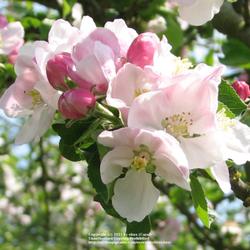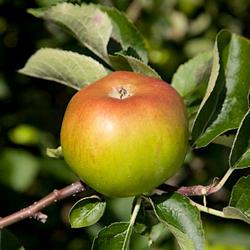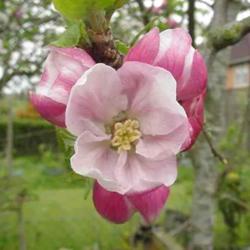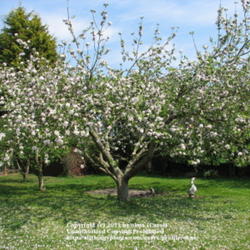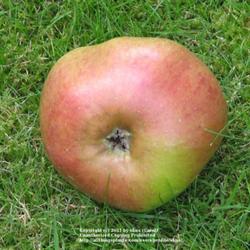General Plant Information (Edit)
| Plant Habit: |
Tree
|
| Life cycle: |
Perennial
|
| Sun Requirements: |
Full Sun to Partial Shade
|
| Water Preferences: |
Mesic
|
| Plant Height: |
20-25ft if unpruned |
| Plant Spread: |
25-30 feet |
| Leaves: |
Deciduous
|
| Fruit: |
Edible to birds
|
| Flowers: |
Showy
Fragrant
|
| Flower Color: |
Pink
|
| Flower Time: |
Spring
Late spring or early summer
|
| Uses: |
Flowering Tree
|
| Edible Parts: |
Fruit
|
| Dynamic Accumulator: |
K (Potassium)
|
| Wildlife Attractant: |
Bees
|
| Propagation: Seeds: |
Will not come true from seed
|
| Propagation: Other methods: |
Cuttings: Stem
Other: Grafting onto rootstock
|
| Pollinators: |
Various insects
|
| Containers: |
Not suitable for containers
|
| Child plants: |
2 child plants |
- Cooking Apple
- Apple
- Bramley
Posted by
okus (Lincolnshire, UK) on Sep 22, 2011 5:54 AM concerning plant:
One of our oldest and best cooking apples. The main drawback to this tree is its size, it is too big for most small urban gardens and it doesn't do well on dwarfing rootstocks. If you do have the space though it is well worth growing. A mature tree will keep you and your family and neighbours in cooking apples most of the year as, stored properly, the fruit keeps well.
A very vigorous grower, it requires regular pruning to keep it to a manageable size and will require another apple tree somewhere in the vicinity, (not necessarily your own garden!) as it is self sterile ( a triploid variety). The pollinator will also need another apple to pollinate it unless it is self fertile as Bramleys, being triploid, are poor pollinators themselves.
« Add a new plant to the database
» Search the Apples Database: by characteristics or by cultivar name
« See the general plant entry for Apples (Malus)
« The Apples Database Front Page
« The Plants Database Front Page
